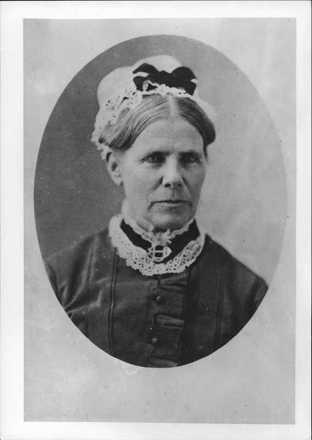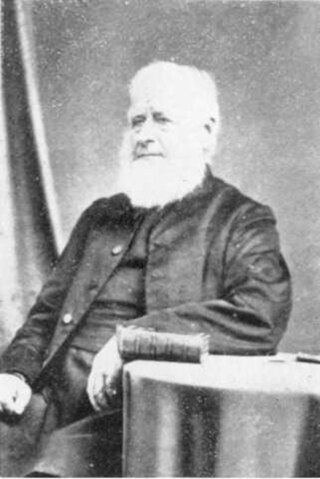
Native schools or Māori schools in New Zealand were established to provide education for Māori children. The first schools for Māori were established by the Anglican Church Missionary Society (CMS) in the Bay of Islands starting in 1816. Catholic priests and brothers established schools for Māori throughout the country, including Hato Paora College (Feilding) and Hato Petera College (Auckland). St Joseph's Māori Girls' College (Taradale) was founded by the Sisters of Our Lady of the Missions.

George Augustus Selwyn was the first Anglican Bishop of New Zealand. He was Bishop of New Zealand from 1841 to 1869. His diocese was then subdivided and Selwyn was Metropolitan of New Zealand from 1858 to 1868. Returning to Britain, Selwyn served as Bishop of Lichfield from 1868 to 1878.

Henry Williams was the leader of the Church Missionary Society (CMS) mission in New Zealand in the first half of the 19th century.

Te Waimate Mission was the fourth mission station established in New Zealand and the first settlement inland from the Bay of Islands. The members of the Church Missionary Society (CMS) appointed to establish Te (the) Waimate Mission at Waimate North were the Rev. William Yate and lay members Richard Davis, George Clarke and James Hamlin.

Octavius Hadfield was Archdeacon of Kāpiti, Bishop of Wellington from 1870 to 1893 and Primate of New Zealand from 1890 to 1893. He was a member of the Church Missionary Society (CMS) for thirty years. He was recognised as an authority on Māori customs and language. His views on Māori rights, expressed in several books strongly criticised the actions of the New Zealand Government. Hadfield married Catherine (Kate) Williams a daughter of the Rev. Henry Williams and Marianne Williams.

William Gilbert Puckey, born in Penryn, England, was a missionary in New Zealand. He accompanied his parents to New Zealand at the age of 14. He became widely regarded as one of the best interpreters of Māori in the fledgling mission. He was able to form relationships of trust with many influential Māori from a young age, and in particular, with Nōpera Panakareao, of Te Rarawa iwi at Kaitaia.

Elizabeth Colenso was a missionary, teacher and Bible translator in New Zealand.

Richard Taylor was a Church Missionary Society (CMS) missionary in New Zealand. He was born on 21 March 1805 at Letwell, Yorkshire, England, one of four children of Richard Taylor and his wife, Catherine Spencer.

William Leonard Williams (1829–1916) was an Anglican bishop of Waiapu. He was regarded as an eminent scholar of the Māori language. His father, William Williams, was the first Bishop of Waiapu, Williams was the third bishop, and his son, Herbert Williams, was the sixth bishop of Waiapu.

William Williams was consecrated as the first Anglican Bishop of Waiapu, New Zealand, on 3 April 1859 by the General Synod at Wellington. His son, Leonard Williams became the third Bishop of Waiapu and his grandson, Herbert Williams, the sixth. His brother, the Rev. Henry Williams, led the Church Missionary Society (CMS) mission in New Zealand. William Williams led the CMS missionaries in translating the Bible into Māori and published an early dictionary and grammar of the Māori language.

Jane Williams was a pioneering educator in New Zealand. Together with her sister-in-law Marianne Williams, she established schools for Māori children and adults. She also educated the children of the Church Missionary Society in the Bay of Islands, New Zealand.
Bible translations into Oceanic languages have a relatively closely related and recent history.

Rota Waitoa was a New Zealand Anglican clergyman, of Māori descent. Waitoa identified with the Ngāti Raukawa iwi. He was born in Waitoa, Waikato, New Zealand. Waitoa's ordination as deacon at St Paul's, Auckland, on 22 May 1853, was the first ordination of a Māori into the Anglican church.

TāmihanaTe Rauparaha was a New Zealand Māori leader, Christian evangelist, assessor, writer and farmer. He was born in Pukearuhe, Taranaki, New Zealand, the son of the great Ngāti Toa leader Te Rauparaha and his fifth and senior wife, Te Ākau of Tūhourangi.
John Morgan was an Anglican missionary and a member of the Church Missionary Society (CMS) mission in New Zealand in the 19th century. He was an important missionary to the Māori who established the Te Awamutu district.

Thomas Samuel Grace was an English Anglican missionary in New Zealand. He was a member of the Church Missionary Society. He was born in Liverpool, Lancashire, England on 16 February 1815.
George Adam Kissling was the second Archdeacon of Waitemata.
The New Zealand Church Missionary Society (NZCMS) is a mission society working within the Anglican Communion and Protestant, Evangelical Anglicanism. The parent organisation was founded in England in 1799. The Church Missionary Society (CMS) sent missionaries to settle in New Zealand. The Rev. Samuel Marsden, the Society's Agent and the Senior Chaplain to the New South Wales government, officiated at its first service on Christmas Day in 1814, at Oihi Bay in the Bay of Islands, New Zealand.
Benjamin Yate Ashwell was an Anglican missionary and a member of the Church Missionary Society (CMS) mission in New Zealand in the 19th century. He was missionary to the Māori in the western Waikato region. In 1839 he was sent to Kaitotehe, near Mount Taupiri, where he established the Kaitotehe Mission, with branch missions at Te Awamutu and Otawhao in the valley of the Waipā River.
James Stack was a Wesleyan Methodist missionary at Kaeo, New Zealand, in the 19th century. He later became an Anglican missionary and a member of the Church Missionary Society (CMS). In 1827 he experienced the Wesleydale Methodist Mission being ransacked by warriors of the Ngāpuhi iwi (tribe). In the late 1830s he worked with other CMS missionaries in Te Papa Mission at Tauranga, after a war party led by Te Waharoa, the leader of the Ngāti Hauā, attacked neighbouring tribes in Rotorua and Tauranga. He later worked with William Williams in the mission to the Māori of the Gisborne District.















